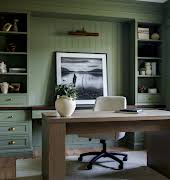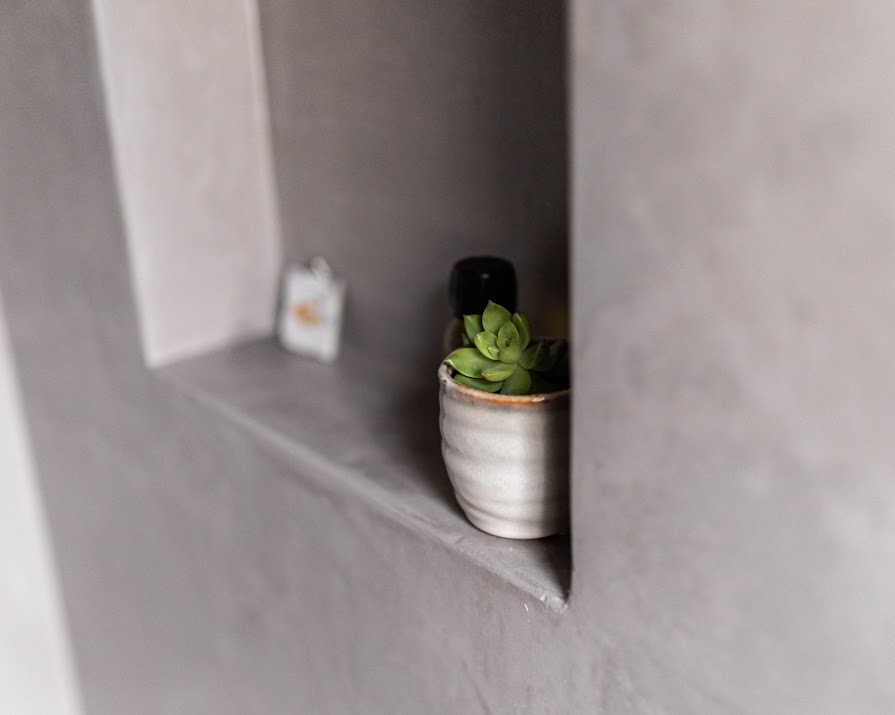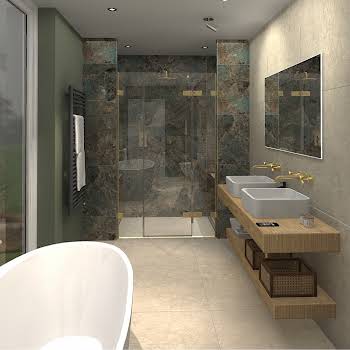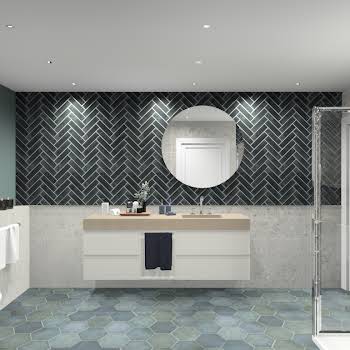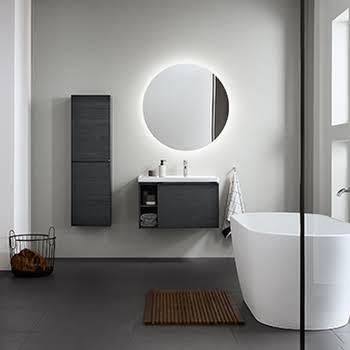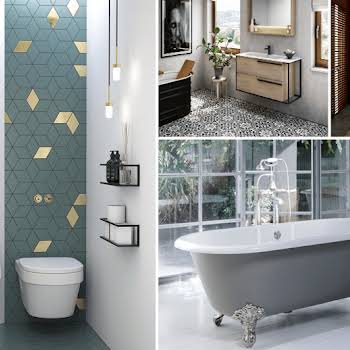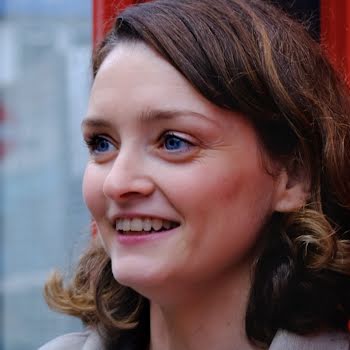
Sponsored
Bathroom renovation on the cards? Microtopping means you never have to clean grout again
Sponsored By

By IMAGE Interiors & Living
03rd Apr 2020
03rd Apr 2020
Sponsored By

Coating surfaces with a thin – but sealed – layer of cement makes for seamless lines and a contemporary finish.
Let’s be real, cleaning grouting is pretty low down on the list of enjoyable household tasks. Lately, we’ve been seeing microtopping, a decorative coating composed of high-performance cement mixed with polymers, used on all kind of surfaces, including floors and ceilings, but it is especially brilliant in bathrooms.
It is line free, creating a tactile finish that will never need to be tackled with cleaning products and a tiny toothbrush, and it is ideal for making a small space feel bigger as it is a continuous surface. We caught up with Peter McNamara of PMAC to find out more.
What is the difference between cement Microtopping and polished concrete?
Microtopping comes in a liquid format and can adhere to almost any surface. This avoids the expense and environmental impact of removing existing surfaces. It is applied by trained applicators layer by layer, until it reaches a thickness of 3 mm. Polished concrete on the other hand is the art of grinding and polishing a concrete slab to render a durable and shiny surface.
What kind of surfaces can you apply it to?
Microtopping can be applied to most surfaces like wood, fibreglass, concrete, self-levelling, ceramic or natural stone. It is extremely flexible and can be applied seamlessly to horizontal and vertical surfaces and is ideal for floors, walls, ceilings, counter tops and recesses.
What are its benefits?
Microtopping offers a continuous surface without the need for any joints and its beautiful finish, texture and versatility make it one of the preferred materials used by interior designers. It can be applied to most surfaces so there is no need to rip out existing base materials, which is good for the pocket and the environment. Its versatility extends to its use in furniture, fireplaces and can even be used outdoors. Microtopping is highly resistant to various stresses such as heat and water which makes it an ideal coating for fireplaces, counter tops and cement bathrooms.

It comes in a variety of colours and density of pigment can be adjusted to find your ideal tone. The colour can be changed over time, if you want to change your colour scheme its just a matter of sanding down the surface and re coating in the new colour. The surface can also be rejuvenated over time hence giving you a durable and sustainable finish.
Are there any downsides?
It is a very labour-intensive product to apply. It is trowelled on by hand and must be allowed to fully dry out in between in each coat. Once complete it must be allowed to cure for a minimum of 7 days before it can take any traffic. It can be damaged by dragging a sharp object across it.
How long does it take to dry?
As previously mentioned, during application each layer must be allowed to fully dry out before it is sanded down and another coat applied. It takes longer to dry out in humid and damp conditions. Once the final coat has been applied and the surface sealed it needs a minimum of 7 days to cure to allow the pores to close before it can take any traffic.

If applying to floor too, does that make it more complicated?
Not necessarily more complicated but we do apply two additional coats to the floor as obviously this is going to be exposed to a lot more stresses than a wall or ceiling. The type of final seal we apply will depend on the final use of the surface. In a heavily trafficked area, we will apply a topical seal, in a commercial setting we may need to apply an anti slip sealer. In cement bathrooms and wet rooms, we apply a hydro defensive seal.
Are you seeing a growing interest in micro topping?
Most definitely, the rise in popularity in Microtopping seems to be coming on the back end of the popularity of polished concrete floors. The cement look and seamless continuous finish of cement type floors is very much in vogue in modern design. Concrete also blends beautifully with other materials such as stone, bricks, wood and plastic.

What colours are available?
Another great advantage of Microtopping is the range of colours it comes in. There is a palette of beautiful soft colours to choose from. The most popular however are the grey shades and there are a variety of different tones available.

Do you have samples or do customers have to call to the showroom?
We have a showroom in our offices in Harold’s Cross, which is open to the public any time Monday to Friday 9-5. Here we have samples of Microtopping on the floors and walls and also we have samples of the various colours available.
What is the guide price per square meter?
Price is largely dependent on the size of the area to be treated and whether it is on the floors and wall. Very small areas are a lot more expensive per m2 because of the drying time between coats. You would need to budget from €120 – €160 per M2
Do you do projects nationwide?
Again it would depend on the size of the project. We have carried out Microtopping projects in Donegal, Mayo and Galway but in order to make them economically viable they would need to be a minimum of 60 M2.
Microtopping is just one offering from a line of services offered by PMAC. Although the warehouse in Harold’s Cross, Dublin 12 is currently closed for sample viewings, you can visit pmac.ie to find out more, and the team are happy to answer any queries via email at info@pmac.ie or by calling 01 472 2666.







